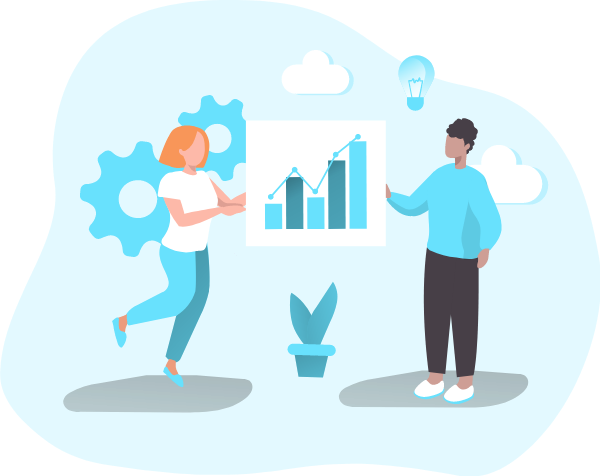Managing a New Community and Team¶
As researchers, scientists and ‘techies’ we look for ways to use our skills to solve pressing, current issues.
The most recent example is the COVID-19 pandemic and related events [WorldHOrganisation20] worldwide including the global lockdown that started in February 2020. The research communities responded with a sudden surge of hackathons, data modelling projects, task forces, and working groups to find effective and immediate technical solutions to combat this health crisis.

Fig. 13 _An illustration of analytic process. Royalty free image from Many Pixels¶
Such action oriented efforts result from a motivation to pull together and combine our scientific knowledge to address unprecedented situations, which is surely an ideal way to move forward. Nevertheless, forming effective collaborations is a challenging process, even in the best of times. Keeping a team engaged is a continuous activity that requires regular checking in and evaluation. Based on each evaluation we can change and improve our workflow and community practices. However, when we hastily create a project to tackle an immediate problem at hand, we don’t have the benefit of time to carry out such evaluation. Therefore it is even more important to be intentional when creating teams and communities and apply the tried and tested best practices from the beginning.
So, how can we ensure that the teams and research communities we form during the time of urgency are built on the foundation of excellent science and community practices? To help researchers address this issue, especially when starting a community or team-oriented projects in a short amount of time (such as a pandemic), we have compiled recommendations drawn from the experiences of community and technical experts. In this chapter we discuss the important aspects that helps make a project truly productive, while being successfully community-oriented. We also discuss useful ways to tackle technical issue that can arise in a project. In the third subchapter, we urge our readers to identify their stakeholders, actively invite them to participate and value the differences that exist in their teams and communities.
We hope that practices recommended in this chapter will give a good starting point for building successful collaboration with your team and community. We want to prompt everyone to think critically not just about the technicalities of the work, but also the social environment in which it is being conducted.
This chapter was originally discussed and written in an online post by Malvika Sharan, Yo Yehudi, Colin Sauze, Raniere Silva, Caroline Jay, Robert Haines and Claire Wyatt as a part of the Collaboration Workshop 2020 speed blog series hosted by Software Sustainability Institute.
